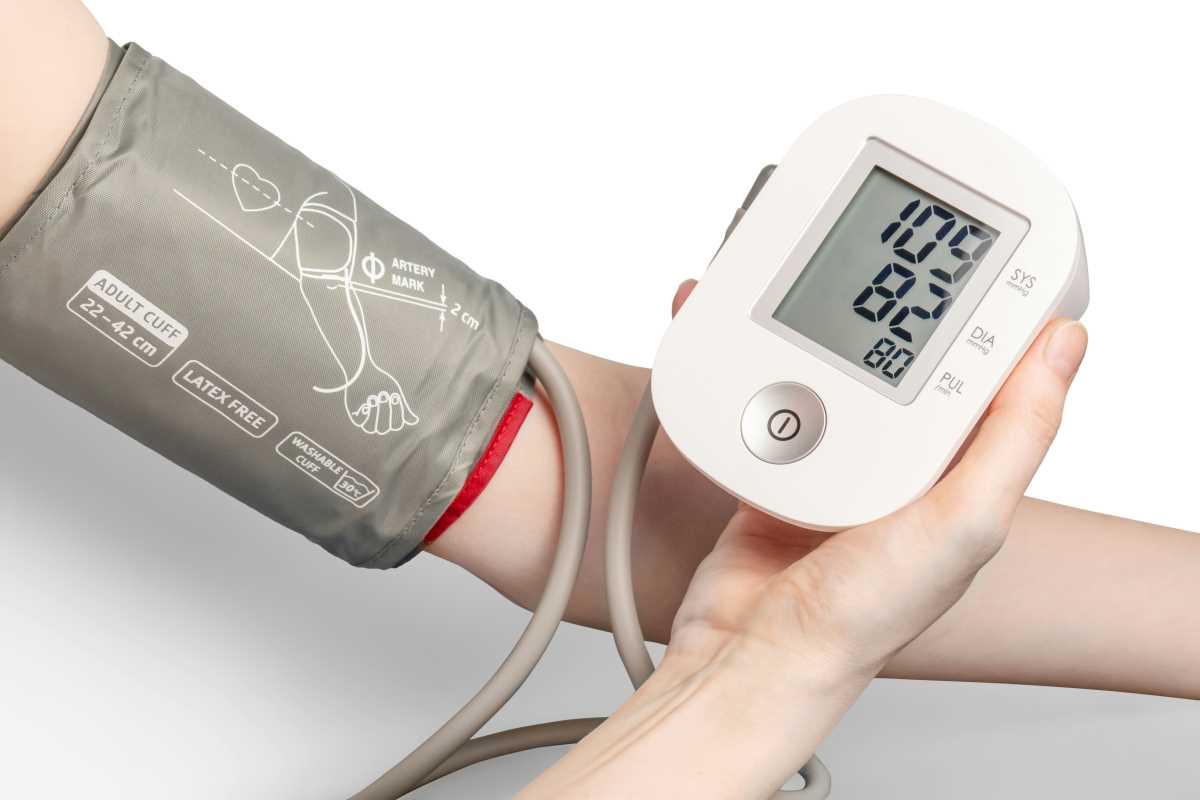Heart disease remains the leading cause of death worldwide, but groundbreaking advances in cardiovascular risk prediction are changing how we identify, prevent, and treat this silent killer. Recent breakthroughs in blood testing, genetic analysis, and innovative therapies are revolutionizing our ability to detect cardiovascular risk years before symptoms appear. For adults in their middle years, these developments offer unprecedented opportunities to take control of heart health through precise, personalized prevention strategies.
Let's explore how cutting-edge science is transforming cardiovascular care and what these innovations mean for your health journey.
The Breakthrough in Blood Testing: Beyond Traditional Cholesterol
For nearly six decades, measuring cholesterol levels has been our primary tool for assessing heart disease risk. While effective, this approach has significant limitations. Traditional cholesterol tests can underestimate risk in approximately one in twelve patients – a concerning gap when 20 to 40 percent of first-time cardiovascular events prove fatal.
The Revolutionary ApoB Test
Researchers from Chalmers University of Technology and Harvard University have identified a game-changing solution. Their comprehensive study, analyzing blood samples from over 200,000 people in the UK Biobank, demonstrates that measuring apolipoprotein B (apoB) provides superior accuracy in predicting heart disease risk.
Here's why this matters: cholesterol doesn't circulate freely in your bloodstream. Instead, it travels in specialized carriers called lipoproteins. The apoB protein sits on the surface of "bad cholesterol" particles, making it an excellent marker for counting the total number of these potentially harmful carriers.
Why apoB testing is superior:
- Counts actual particles that can cause arterial damage
- More accurate than measuring cholesterol content alone
- Identifies risk in patients who appear normal on standard tests
- Available commercially and cost-effective to implement
The study's lead author, Jakub Morze, explains: "Since apoB indicates the total number of 'bad cholesterol' particles, measuring it offers a more accurate test than standard cholesterol measures. By switching to apoB testing, we can improve accuracy and potentially save lives."
The Lipoprotein(a) Connection
The research also highlights another crucial marker: lipoprotein(a), or Lp(a). While this represents less than 1 percent of all "bad cholesterol" particles in most people, some individuals have extremely high levels that significantly increase heart disease risk.
Key facts about Lp(a):
- Levels are largely determined by genetics
- Cannot be significantly reduced through diet or lifestyle alone
- Requires specific targeted treatments when elevated
- Should be tested alongside apoB for comprehensive risk assessment
Polygenic Risk Scores: Your Genetic Blueprint for Heart Health
The future of cardiovascular risk prediction extends far beyond single blood tests. Mayo Clinic experts predict that polygenic risk scores will become standard tools for assessing heart disease likelihood before symptoms develop.
Understanding Polygenic Risk Scores
These sophisticated tools analyze multiple genetic variants across your entire genome to calculate your predisposition to cardiovascular disease. Unlike testing for single gene mutations, polygenic risk scores consider the cumulative effect of numerous genetic variations that each contribute a small amount to your overall risk.
Benefits of polygenic risk scores:
- Identify high-risk individuals in their teens and twenties
- Enable earlier intervention when prevention is most effective
- Customize treatment strategies based on genetic profile
- Improve diagnosis accuracy when combined with other markers
Dr. Bernard Gersh from Mayo Clinic emphasizes the transformative potential: "With these risk-stratifying tools of imaging, AI and genetics, there's potential for people to know their risk of heart disease before symptoms appear."
RNA-Targeted Therapies: Precision Medicine Revolution
Traditional cardiovascular medications work by blocking or enhancing specific biological pathways. The next generation of treatments takes a fundamentally different approach by targeting RNA – the molecular messenger that translates genetic instructions into proteins.
Dramatic Cholesterol Reduction
RNA-targeted therapies promise to lower cholesterol levels to unprecedented depths. Clinical trials are currently testing drugs that could reduce serum cholesterol far beyond what current medications achieve.
Advantages of RNA-based cholesterol treatments:
- Target the biological systems causing high cholesterol
- Achieve greater cholesterol reduction than traditional statins
- Potentially reduce cardiac events more effectively
- May require less frequent dosing
Revolutionary Hypertension Management
High blood pressure affects millions of Americans, and medication compliance remains a significant challenge. RNA technology offers hope for transforming hypertension treatment through targeted therapeutic agents that may only require dosing twice yearly.
This approach addresses a critical problem: many people with hypertension don't take their medications consistently. A twice-yearly treatment could dramatically improve blood pressure control across populations.
Gene Modification: Preventing Disease Before It Starts
Perhaps the most futuristic – yet increasingly realistic – advance involves using CRISPR-Cas9 gene editing technology to prevent cardiovascular disease at its genetic source.
Early Intervention Potential
For individuals born with genes predisposing them to conditions like hypertrophic cardiomyopathy, gene editing offers the possibility of preventing disease manifestation entirely. While it may take years for genetic conditions to become clinically apparent, scientists could potentially modify problematic genes in utero or early in life.
Current applications being studied:
- Preventing inherited cardiomyopathies
- Modifying genes that cause familial hypercholesterolemia
- Addressing genetic variants that increase blood pressure
- Correcting mutations that affect heart rhythm
Clinical trials are already underway, though widespread application remains years away.
Advanced Imaging and Artificial Intelligence
The integration of sophisticated imaging techniques with artificial intelligence is creating new possibilities for early cardiovascular risk detection.
Inflammatory Imaging
New imaging technologies can visualize inflammation within arterial walls – something impossible just five to ten years ago. This capability allows doctors to identify active disease processes before they cause symptoms or show up on traditional tests.
AI-Enhanced Risk Prediction
Artificial intelligence systems can analyze complex patterns across multiple data sources – genetic information, imaging results, blood tests, and clinical history – to provide more accurate risk predictions than any single test alone.
Overcoming Implementation Challenges
While these advances offer tremendous promise, several obstacles must be addressed for widespread implementation.
Economic and Social Disparities
Access to advanced testing and treatments remains unequal. Ensuring that breakthrough technologies benefit all populations, regardless of economic status, represents a significant challenge for healthcare systems worldwide.
Cost Considerations
Advanced genetic testing, sophisticated imaging, and novel RNA therapies will likely carry substantial costs initially. Healthcare systems must develop strategies to make these innovations accessible while managing expenses.
Early Treatment Paradigms
Successfully implementing these advances requires changing traditional approaches to cardiovascular care. Instead of waiting until middle age to address cholesterol and blood pressure, optimal prevention may require intervention in teens and twenties.
The Future Impact on Cardiovascular Care
These revolutionary advances are converging to create a new paradigm for cardiovascular medicine focused on prediction, prevention, and personalized treatment.
Earlier Detection and Intervention
The combination of genetic testing, advanced blood markers, and AI-enhanced imaging will identify high-risk individuals decades before symptoms appear. This early detection window provides unprecedented opportunities for prevention.
Personalized Treatment Strategies
Rather than applying one-size-fits-all approaches, future cardiovascular care will be tailored to individual genetic profiles, risk factors, and disease mechanisms. This precision medicine approach should improve outcomes while reducing side effects.
Shifting from Treatment to Prevention
As Dr. Gersh notes, "The time to reduce cholesterol is not when people are 65 years old; it's when they're 20." These advances will enable and necessitate much earlier intervention strategies.
Taking Action Today
While many of these innovations are still in development, you can take advantage of currently available advances. Ask your healthcare provider about apoB and Lp(a) testing, especially if you have a family history of heart disease or other risk factors.
Sources:
This article incorporates information from the following credible medical and scientific sources:
Chalmers University of Technology and Harvard University Study (2025): Morze, J., et al. "ApoB-containing lipoproteins: count, type, size, and risk of coronary artery disease." European Heart Journal. Research conducted analyzing blood samples from over 200,000 participants in the UK Biobank regarding apolipoprotein B (apoB) and lipoprotein(a) testing for cardiovascular risk prediction.
Mayo Clinic Medical Professional Resources (2025): "Revolutionary advances in the future of cardiology" - Expert insights from Dr. Bernard J. Gersh, M.B., Ch.B., D.Phil., consultant in Cardiovascular Medicine at Mayo Clinic, covering polygenic risk scores, RNA-targeted therapies, gene modification techniques, and future developments in cardiovascular medicine.
Disclaimer: The content provided on SuperHealthyTips is for informational and educational purposes only. This information is not intended to be a substitute for professional medical advice, diagnosis, or treatment.







